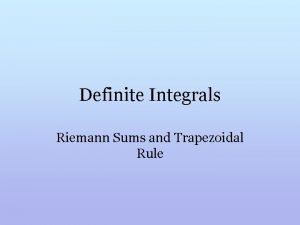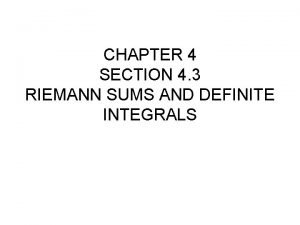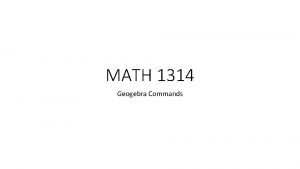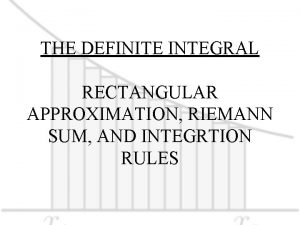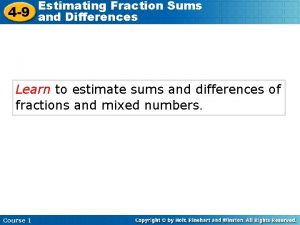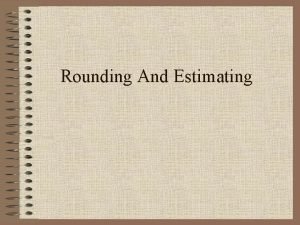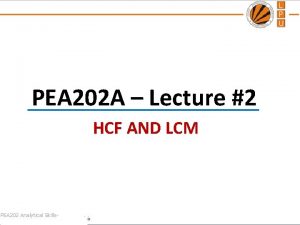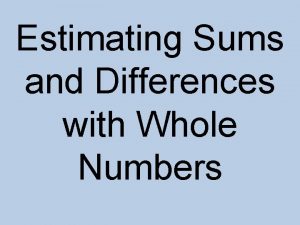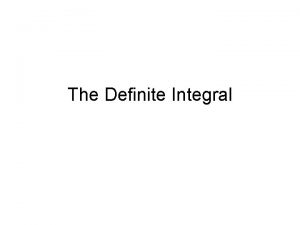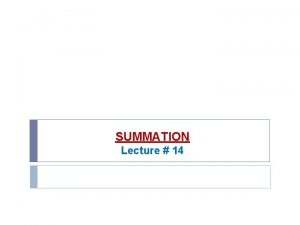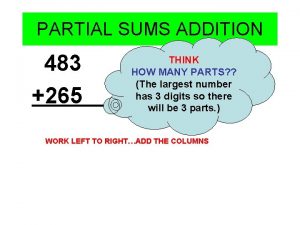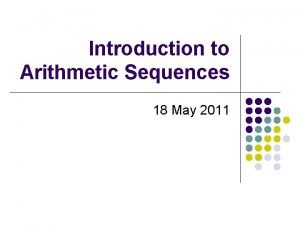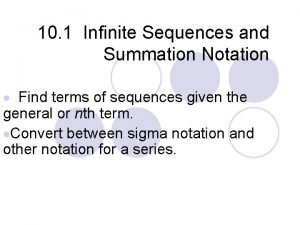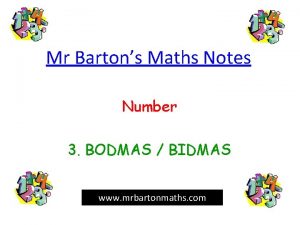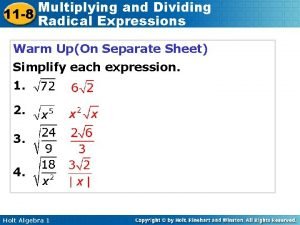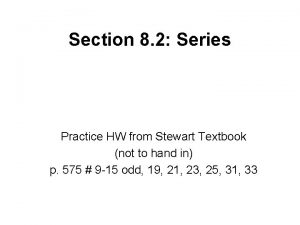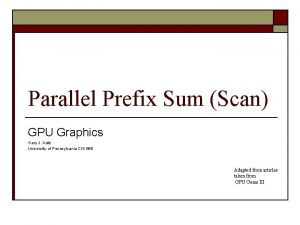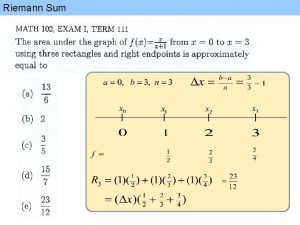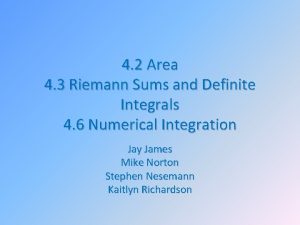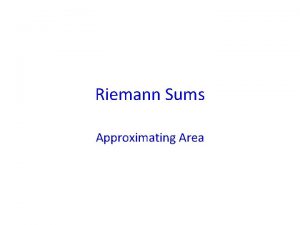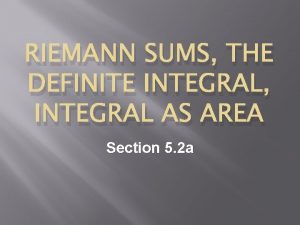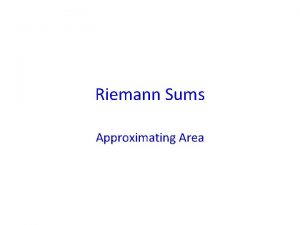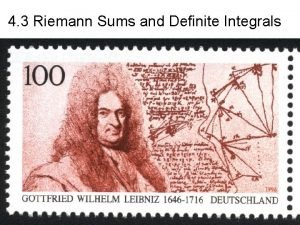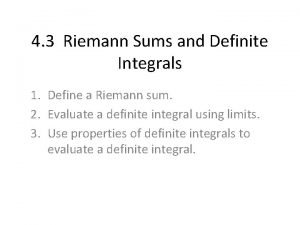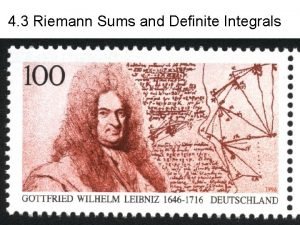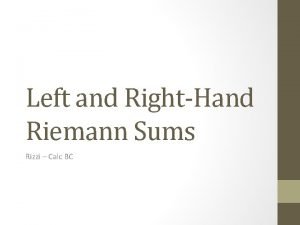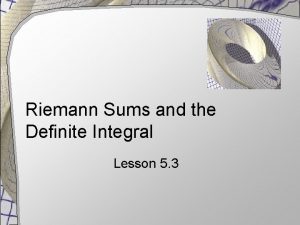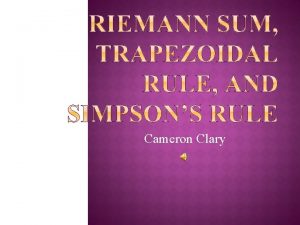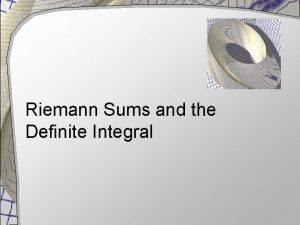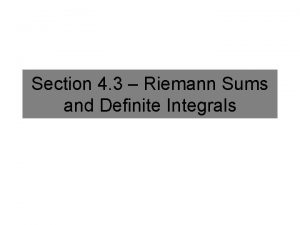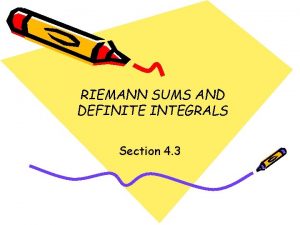5 2 Riemann Sums and Area I Riemann

![I. Riemann Sums A. ) Let f (x) be defined on [a, b]. Partition I. Riemann Sums A. ) Let f (x) be defined on [a, b]. Partition](https://slidetodoc.com/presentation_image_h2/34ef0f8322d3a77bb7495407069fbf59/image-2.jpg)


















- Slides: 20

5. 2 Riemann Sums and Area
![I Riemann Sums A Let f x be defined on a b Partition I. Riemann Sums A. ) Let f (x) be defined on [a, b]. Partition](https://slidetodoc.com/presentation_image_h2/34ef0f8322d3a77bb7495407069fbf59/image-2.jpg)
I. Riemann Sums A. ) Let f (x) be defined on [a, b]. Partition [a, b] by choosing These partition [a, b] into n parts of length Δx 1, Δx 2, … Δxn. In each subinterval, choose a point c 1, c 2, …cn and form the sum This is called a Riemann Sum *NOTE: LRAM, MRAM, and RRAM are all Riemann sums.

B. ) Def. - The NORM of P, denoted ||P||, is the length of the largest subinterval. C. ) Def. – If is defined on [a, b], then the DEFINITE INTEGRAL of f (x) over [a, b] is provided the limit exists. This is denoted *NOTE: If the limit exists, then f (x) is said to be integrable on [a, b].

II. EXISTENCE A. ) Thm: (Existence of the limit of a Riemann Sum) 1. ) If f (x) is continuous on [a, b], then f (x) is integrable on [a, b]. 2. ) If f (x) is bounded and has a finite number of discontinuities on [a, b], then f (x) is integrable on [a, b].

III. Examples A. ) Express the limit as a definite integral: , where P is a partition of [1, 4].

B. ) Express as a limit. where P is a partition of .

III. Definite Integrals and Technology A. ) fn. Int – Under MATH – 9 where f (x) is the function, x is the variable of integration, and a and b are the bounds of the integration.

B. ) Use your calculator to evaluate the following definite integrals:


V. Area Under a Curve A. ) Def. - If f (x) ≥ 0 and integrable on [a, b], then the area bounded by the curve, the x-axis, and the vertical lines x = a and x = b is

B. ) Find the area under the curve x = 0 to x = 3. from

C. ) Find the area bounded by the curve the x-axis, and the vertical lines x = -1 to x = 3. By Geometry By Definite Integral - WHY? ? -

D. ) FACT – For any integrable function: **Note – AREA is ALWAYS POSITIVE, the definite integral MAY be NEGATIVE.

VI. Examples A. ) Determine the value of the following definite integrals by using the areas bounded by the graph of the function, the x-axis, and the bounds given.

WHY? ? ?

WHY? ? ?

WHY? ? ?

B. ) Express the area bounded by f (x) and the xaxis in terms of an integrable expression and then find it.


 Trapezoidal sum formula
Trapezoidal sum formula How to write riemann sums
How to write riemann sums Geogebra riemann sums
Geogebra riemann sums Right riemman sum
Right riemman sum Estimate fraction sums and differences
Estimate fraction sums and differences Front end estimation
Front end estimation Lcm of 404 and 96
Lcm of 404 and 96 Estimating sums and differences of whole numbers
Estimating sums and differences of whole numbers Riemann sum to integral
Riemann sum to integral Sum of gs
Sum of gs Partial sums addition
Partial sums addition Sum of arithmetic series
Sum of arithmetic series Arithmetic sigma notation
Arithmetic sigma notation Bodmas printing
Bodmas printing Bidmas sums
Bidmas sums A rule of nature that sums up related observations
A rule of nature that sums up related observations 10 multiply sums
10 multiply sums Word sums morphology
Word sums morphology Partial sums
Partial sums Sums
Sums Multiply sums
Multiply sums
